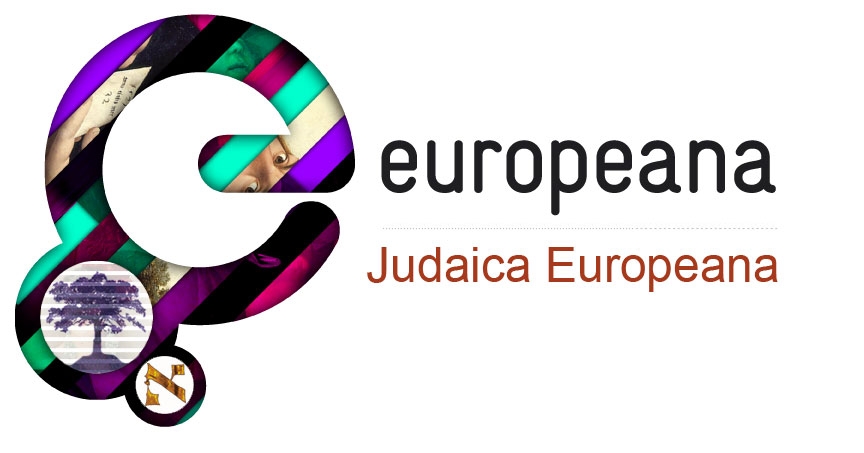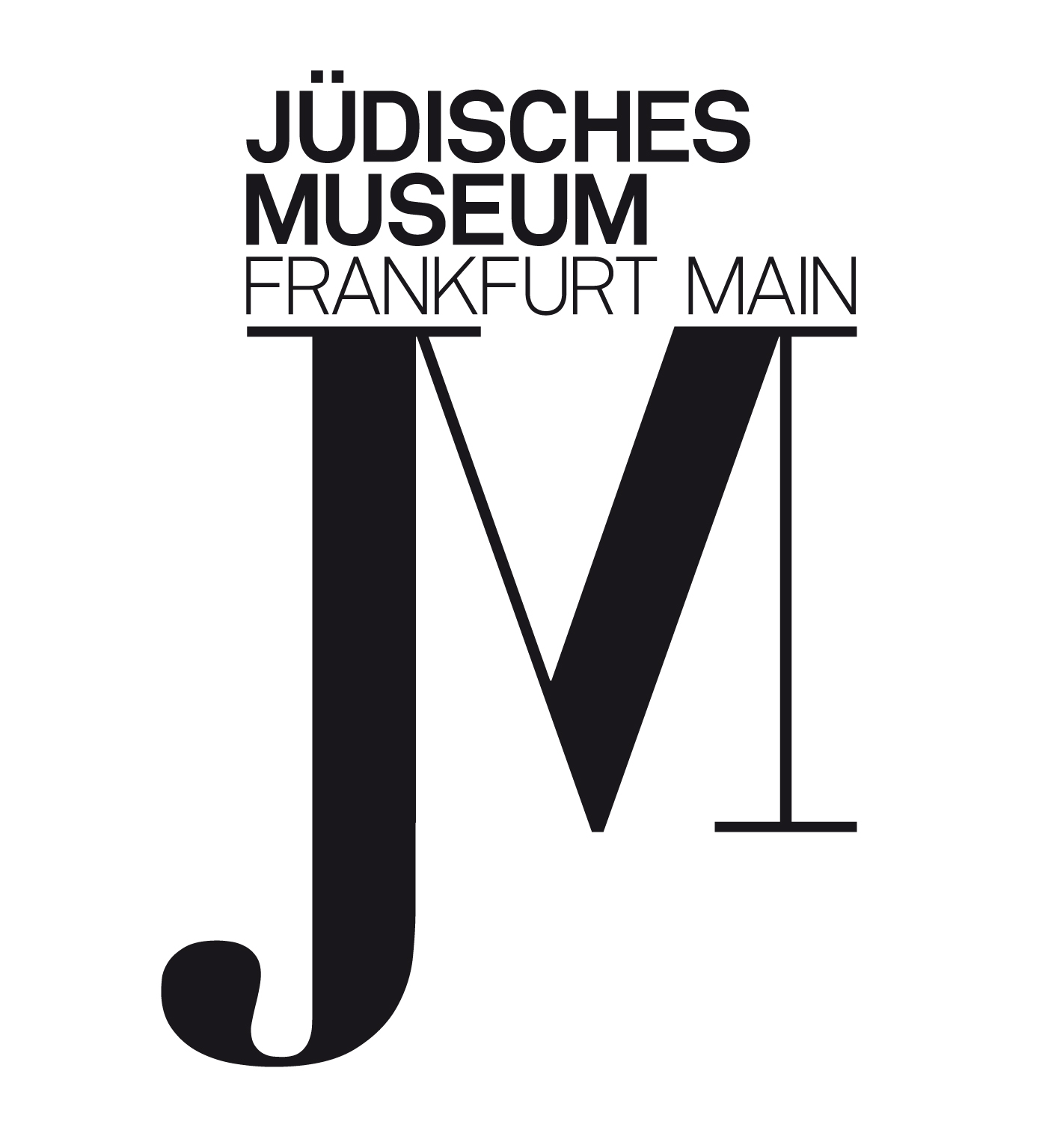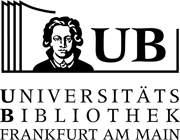-
The Westend Synagogue

The Westend Synagogue
-
Ignatz Bubis Community Center

Ignatz Bubis Community Center
-
The Old Jewish Cemetery
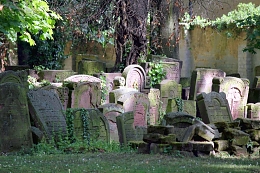
The Old Jewish Cemetery
-
Jewish Cemetery on Rat-Beil-Strasse
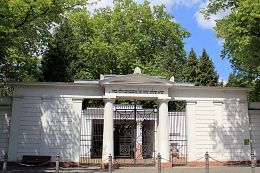
Jewish Cemetery on Rat-Beil-Strasse
-
New Jewish Cemetery
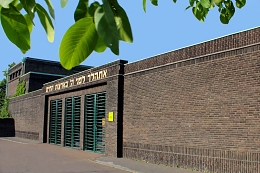
New Jewish Cemetery
-
The Jewish Museum

The Jewish Museum
-
Museum Judengasse
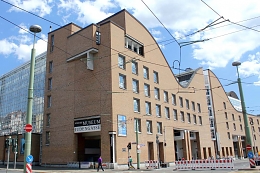
Museum Judengasse
-
Neuer Börneplatz Memorial Site

Neuer Börneplatz Memorial Site
-
Paul Arnsberg Memorial Stele
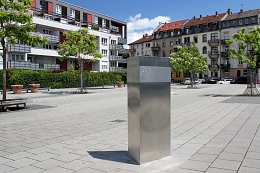
Paul Arnsberg Memorial Stele
-
Place of Remembrance: Synagogue Friedberger Anlage
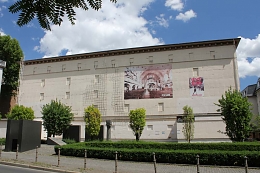
Place of Remembrance: Synagogue Friedberger Anlage
-
Universitätscampus Westend

Universitätscampus Westend
-
The Memorial Stele in Grüneburg Park
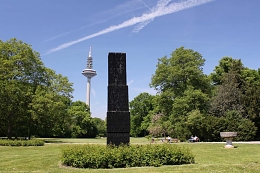
The Memorial Stele in Grüneburg Park
-
Isaak E. Lichtigfeld School in the Philanthropin
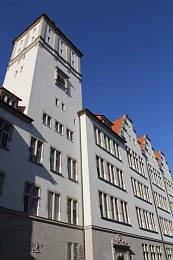
Isaak E. Lichtigfeld School in the Philanthropin
-
Place of Remembrance: Anne Frank
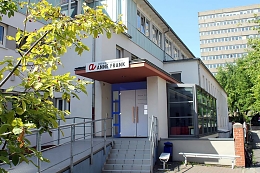
Place of Remembrance: Anne Frank
-
The “Porcelain Bear House”
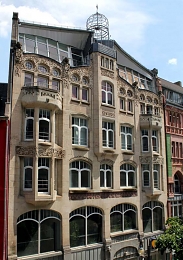
The “Porcelain Bear House”
-
The Livingston Stables
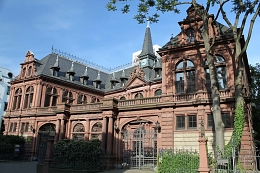
The Livingston Stables
Jews have lived in Frankfurt continuously for nearly 900 years, longer than in any other German city. They worked as merchants, bankers, politicians, philanthropists, artists and scientists. In 1949, after the National Socialist devastation, the Jewish community was reestablished. It now has some 7,200 members, half of whom come from the former Soviet Union. Along with Berlin, Munich and Düsseldorf, Frankfurt is one of the four largest Jewish communities in Germany. Its many institutions include two kindergartens, the I. E. Lichtigfeld School in the Philanthropin, and the Senior Citizens’ Home, as well as a number of social services and programs for seniors. The community offers regular Liberal as well as Orthodox services.
The first documented mention of Jews in Frankfurt can be traced back to the middle of the 12th century. The Jewish community was attacked for the first time in 1241; a second pogrom took place in 1349. In 1462 Europe’s first ghetto was established outside the city wall: the Judengasse, which arcs from today’s Konstablerwache nearly up to the Main River.1 Its few remnants are integrated into the Judengasse Museum. For four centuries the ghetto was the only place Jews were allowed to live. Its three doors remained closed at night as well as on Sundays and holidays. In addition to the isolation there were economic restrictions as well as legal, social and cultural constraints. During the French Revolutionary occupation and the ensuing bombardment the northern part of the Judengasse was destroyed in 1796. This event is seen as the catalyst for the Jewish emancipation process, which culminated in 1864 with the granting of broad-based civic rights that put Jews on an equal footing with the rest of the citizenry.
The first documented mention of Jews in Frankfurt can be traced back to the middle of the 12th century. The Jewish community was attacked for the first time in 1241; a second pogrom took place in 1349. In 1462 Europe’s first ghetto was established outside the city wall: the Judengasse, which arcs from today’s Konstablerwache nearly up to the Main River.1 Its few remnants are integrated into the Judengasse Museum. For four centuries the ghetto was the only place Jews were allowed to live. Its three doors remained closed at night as well as on Sundays and holidays. In addition to the isolation there were economic restrictions as well as legal, social and cultural constraints. During the French Revolutionary occupation and the ensuing bombardment the northern part of the Judengasse was destroyed in 1796. This event is seen as the catalyst for the Jewish emancipation process, which culminated in 1864 with the granting of broad-based civic rights that put Jews on an equal footing with the rest of the citizenry.
From that time on, the Jewish population has been engaged socially, economically and culturally, supporting numerous public institutions such as the Alte Oper, the Clementine Children’s Hospital and later , Goethe University.
Over the centuries Frankfurt developed into a center of Jewish learning, with famous rabbis whose legal authority was respected far beyond the confines of the community. Jewish merchants and money handlers played an important role in the economic development of the city. In the 19th century Frankfurt became the cradle of new Jewish movements: Reform Judaism and Neo-Orthodoxy. The turn of the century saw the rise of anti-Semitism that manifested in anti-Jewish demonstrations and boycotts.2 The democratic Weimar Republic was able to quell the remaining discrimination and make way for unrestricted admission to public office. At this juncture, Frankfurt was the second largest Jewish community (after Berlin), with numerous influential personalities taking their place in society: In 1924 Ludwig Landmann, a Jewish Democrat, became Lord Mayor of Frankfurt, but at the same time the NSDAP reviled Frankfurt as “Rothschilds’ city.” In 1933 Frankfurt’s Jewish population numbered 26,158 – thus Frankfurt had the largest Jewish share of population among Germany’s major cities. In 1945 only 160 remained; 12,000 were deported and the rest were able to flee.3 Today the Jewish community is culturally and socially well established, enriching city life through the Jewish Adult Education Center (Jüdische Volkshochschule), the Jewish Cultural Festival and a wide variety of events.
Over the centuries Frankfurt developed into a center of Jewish learning, with famous rabbis whose legal authority was respected far beyond the confines of the community. Jewish merchants and money handlers played an important role in the economic development of the city. In the 19th century Frankfurt became the cradle of new Jewish movements: Reform Judaism and Neo-Orthodoxy. The turn of the century saw the rise of anti-Semitism that manifested in anti-Jewish demonstrations and boycotts.2 The democratic Weimar Republic was able to quell the remaining discrimination and make way for unrestricted admission to public office. At this juncture, Frankfurt was the second largest Jewish community (after Berlin), with numerous influential personalities taking their place in society: In 1924 Ludwig Landmann, a Jewish Democrat, became Lord Mayor of Frankfurt, but at the same time the NSDAP reviled Frankfurt as “Rothschilds’ city.” In 1933 Frankfurt’s Jewish population numbered 26,158 – thus Frankfurt had the largest Jewish share of population among Germany’s major cities. In 1945 only 160 remained; 12,000 were deported and the rest were able to flee.3 Today the Jewish community is culturally and socially well established, enriching city life through the Jewish Adult Education Center (Jüdische Volkshochschule), the Jewish Cultural Festival and a wide variety of events.
- Fritz Backhaus (2006): Die Frankfurter Judengasse, Jüdisches Leben in der frühen Neuzeit, Frankfurt am Main, Societätsverlag 2006. S. XXX.
- Heuberger, Rachel; Krohn, Helga (1988): Hinaus aus dem Ghetto. Juden in Frankfurt am Main, 1800-1950. Frankfurt am Main: Fischer. S. 117f.
- Krohn, Helga (2011): "Es war richtig, wieder anzufangen". Juden in Frankfurt am Main seit 1945. Frankfurt am Main: Brandes & Apsel. S. 18ff.
